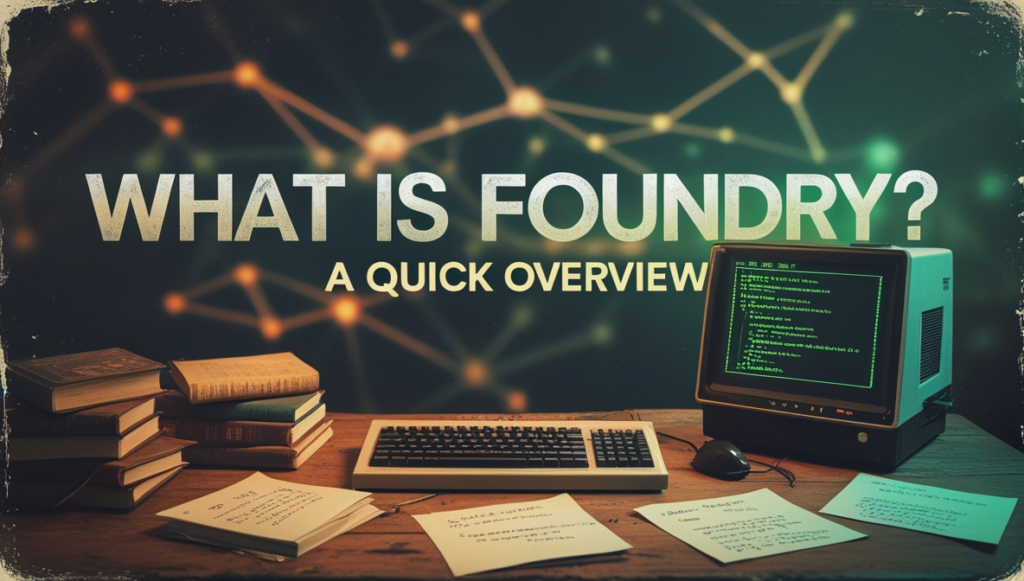Foundry Fuzz Testing : Testing smart contracts is crucial in blockchain development. One of the most powerful tools for this is Foundry, a Solidity-focused framework that allows developers to perform robust testing, including fuzz testing. In this guide, we’ll explore how to leverage Foundry’s automatic input generation, use cheatcodes to manipulate blockchain state, and apply debugging techniques to ensure contract security and reliability.
Table of Contents
Introduction to Foundry Testing Framework

Foundry Fuzz Testing : If you’re diving into Solidity smart contract development and testing, you’ve probably heard about Foundry. It’s one of the most powerful and developer-friendly testing frameworks for Solidity. Whether you’re new to the Foundry testing framework or looking for advanced techniques, this tutorial will cover fuzz testing, cheat codes, and debugging smart contracts using Foundry.
We’ll break down:
- How to fuzz test smart contracts using Foundry
- Manipulating blockchain state with cheat codes
- Warping time and rolling blocks for advanced simulations
- Dealing with accounts and balances during tests
- Debugging and analyzing smart contracts in Foundry
This Foundry tutorial for beginners is designed to be practical and easy to follow, so you can start implementing these techniques right away. Let’s dive in!
What is Foundry? A Quick Overview

Foundry is a Solidity testing framework designed for speed, efficiency, and ease of use. It offers powerful testing capabilities, including:
- Fuzz testing (automated input generation)
- Cheat codes (manipulating blockchain state during tests)
- Fast execution with Rust-based compilation
- Seamless debugging tools
You can think of Foundry as a one-stop solution for writing, testing, and deploying Solidity smart contracts.
To get started, ensure you have Foundry installed:
curl -L https://foundry.paradigm.xyz | bash
foundryupNow, let’s dive into fuzz testing.
Fuzz Testing in Foundry: Automatic Input Generation

What is Fuzz Testing?
Fuzz testing is a powerful testing technique where random inputs are generated to test your contract functions under various conditions. Instead of manually defining test cases, Foundry automatically generates inputs to find potential edge cases.
How to Fuzz Test Using Foundry
In Foundry, fuzz testing is built-in. To enable fuzzing, simply use function parameters in your test functions.
Example of Fuzz Testing in Foundry
contract FuzzTest is Test {
Token token;
function setUp() public {
token = new Token();
}
function testFuzzTransfer(uint256 amount) public {
address recipient = address(0x123);
token.mint(address(this), amount);
token.transfer(recipient, amount);
assertEq(token.balanceOf(recipient), amount);
}
}Why Use Fuzz Testing?
- Catches unexpected bugs by testing a large range of inputs
- Saves time compared to writing individual test cases
- Ensures robustness of smart contracts
Foundry fuzzing is one of the best ways to make your Solidity contracts bulletproof against potential vulnerabilities.
Foundry Cheat Codes: Manipulating Blockchain State in Tests

Foundry provides powerful cheat codes that allow you to manipulate blockchain state during tests. These include:
- warp() → Time manipulation
- roll() → Block number manipulation
- prank() → Changing message sender
- deal() → Modifying account balances
1. Time Manipulation: warp()
The warp() function lets you simulate time changes in smart contracts, useful for testing staking, vesting, and time-based logic.
Example of warp()
function testWarpTime() public {
uint256 start = block.timestamp;
vm.warp(start + 1000);
assertEq(block.timestamp, start + 1000);
}2. Block Manipulation: roll()
The roll() function allows you to manipulate block numbers, useful for testing mining and block-dependent logic.
Example of roll()
function testRollBlock() public {
uint256 start = block.number;
vm.roll(start + 10);
assertEq(block.number, start + 10);
}3. Dealing with Accounts and Balances
Using Foundry cheat codes, you can manipulate accounts and balances with deal().
Example of deal()
function testAccountBalance() public {
address user = address(0x123);
vm.deal(user, 100 ether);
assertEq(user.balance, 100 ether);
}These cheat codes make it easy to simulate different conditions in tests without needing to deploy contracts multiple times.
Debugging and Analyzing Smart Contracts Using Foundry

One of Foundry’s greatest strengths is its built-in debugging tools. Here’s how you can analyze and debug contracts effectively.
1. Using trace() to Inspect Transactions
You can use trace() to inspect execution paths and find potential issues.
function testTrace() public {
vm.trace(address(token), abi.encodeWithSignature("transfer(address,uint256)", address(0x123), 100));
}2. Using ffi() to Call External Scripts
The ffi() function allows you to interact with external processes, making it great for testing with external tools.
function testFFI() public {
bytes memory result = vm.ffi(["bash", "-c", "echo Hello"]);
emit log(string(result)); // Outputs: Hello
}3. Analyzing Gas Usage with gasleft()
Gas optimization is key in Solidity development. Foundry allows you to analyze gas usage using gasleft().
function testGasUsage() public {
uint256 gasStart = gasleft();
token.mint(msg.sender, 1000);
uint256 gasUsed = gasStart - gasleft();
emit log_uint(gasUsed);
}By analyzing gas usage, you can optimize smart contracts for efficiency.
Conclusion: Why Use Foundry for Smart Contract Testing?
Key Takeaways
✅ Fuzz testing in Foundry ensures robust contract testing with automatic input generation.
✅ Cheat codes provide powerful tools to manipulate blockchain state.
✅ Time and block manipulation make advanced simulations easy.
✅ Debugging and analyzing contracts is seamless with built-in tools.
By mastering Foundry testing framework, you can build secure, efficient, and reliable smart contracts.
🚀 Want to level up? Check out Foundry docs, Foundry book, and Foundry tutorial Solidity PDF for more insights.
Additional Resources
Start testing your Solidity smart contracts with Foundry today and take your blockchain development to the next level! 🚀


